Lawrence "Larry" Zox was an American painter and printmaker who is classified as an Abstract expressionist, Color Field painter and a Lyrical Abstractionist, although he did not readily use those categories for his work.

Susan Charna Rothenberg was an American contemporary painter, printmaker, sculptor, and draughtswoman. She became known as an artist through her iconic images of the horse, which synthesized the opposing forces of abstraction and representation.

Pat Steir is an American painter and printmaker. Her early work was loosely associated with conceptual art and minimalism, however, she is best known for her abstract dripped, splashed and poured "Waterfall" paintings, which she started in the 1980s, and for her later site-specific wall drawings.

Miriam Schapiro was a Canadian-born artist based in the United States. She was a painter, sculptor, printmaker, and a pioneer of feminist art. She was also considered a leader of the Pattern and Decoration art movement. Schapiro's artwork blurs the line between fine art and craft. She incorporated craft elements into her paintings due to their association with women and femininity. Schapiro's work touches on the issue of feminism and art: especially in the aspect of feminism in relation to abstract art. Schapiro honed in her domesticated craft work and was able to create work that stood amongst the rest of the high art. These works represent Schapiro's identity as an artist working in the center of contemporary abstraction and simultaneously as a feminist being challenged to represent women's "consciousness" through imagery. She often used icons that are associated with women, such as hearts, floral decorations, geometric patterns, and the color pink. In the 1970s she made the hand fan, a typically small woman's object, heroic by painting it six feet by twelve feet. "The fan-shaped canvas, a powerful icon, gave Schapiro the opportunity to experiment … Out of this emerged a surface of textured coloristic complexity and opulence that formed the basis of her new personal style. The kimono, fans, houses, and hearts were the form into which she repeatedly poured her feelings and desires, her anxieties, and hopes".
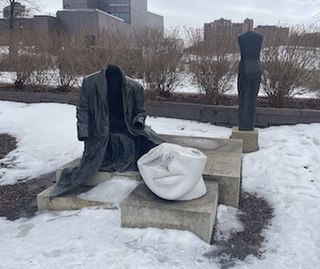
Judith Shea is an American sculptor and artist, born in Philadelphia, Pennsylvania, in 1948. She was awarded a degree in fashion design from the Parsons School of Design in 1969 and earned her Bachelor of Fine Arts degree there in 1975. This dual education formed the basis for her figure based works.

Edward Dugmore was an abstract expressionist painter with close ties to both the San Francisco and New York art worlds in the post-war era following World War II. Since 1950 he had more than two dozen solo exhibitions of his paintings in galleries across the United States. His paintings have been seen in hundreds of group exhibitions over the years.

Howardena Pindell is an American artist, curator, critic, and educator. She is known as a painter and mixed media artist who uses a wide variety of techniques and materials. She began her long arts career working with the New York Museum of Modern Art, while making work at night. She co-founded the A.I.R. gallery and worked with other groups to advocate for herself and other female artists, Black women in particular. Her work explores texture, color, structures, and the process of making art; it is often political, addressing the intersecting issues of racism, feminism, violence, slavery, and exploitation. She has created abstract paintings, collages, "video drawings," and "process art" and has exhibited around the world.

Mary Miss is an American artist and designer. Her work has crossed boundaries between architecture, landscape architecture, engineering and urban design. Her installations are collaborative in nature: she has worked with scientists, historians, designers, and public administrators. She is primarily interested in how to engage the public in decoding their surrounding environment.

Agnes Weinrich was an American visual artist. In the early twentieth century, she played a critical role in introducing cubist theory to American artists, collectors, and the general public and became one of the first American abstractionists. A life-long proponent of modernist art, she was an active participant in the art communities of Provincetown and New York. Early in her career, she traveled widely in Europe and spent extended periods studying in Paris and Berlin. She also studied art in Chicago, Provincetown, and New York. During most of her career, she worked in a Provincetown studio during the warm months and a Manhattan studio during the cold ones. Weinrich's easel work included oil paintings, watercolors, and pastels. She also made block prints and etchings and drew using pencil and crayon. Her paintings, prints, and drawings appeared in solo and group exhibitions throughout her career and she received favorable critical attention both during her life and after her death.

Jennie C. Jones is an African-American artist living and working in Brooklyn, New York. Her work has been described, by Ken Johnson, as evoking minimalism, and paying tribute to the cross-pollination of different genres of music, especially jazz. As an artist, she connects most of her work between art and sound. Such connections are made with multiple mediums, from paintings to sculptures and paper to audio collages. In 2012, Jones was the recipient of the Joyce Alexander Wien Prize, one of the biggest awards given to an individual artist in the United States. The prize honors one African-American artist who has proven their commitment to innovation and creativity, with an award of 50,000 dollars. In December 2015 a 10-year survey of Jones's work, titled Compilation, opened at the Contemporary Arts Museum in Houston, Texas.
Susan Michod is an American feminist painter who has been at the forefront of the Pattern and Decoration movement since 1969. Her work "consists of monumental paintings [which are] thickly painted, torn, collaged, spattered, sponged, sprinkled with glitter and infused with a spirit of love of nature and art," the art critic Sue Taylor has written.
Julia Fish is an American artist whose paintings have a deceptive simplicity. She paints in oil on stretched rectangular canvases of varying size. By means of close observation of everyday subjects—leaves of a tree seen through a window, a section of floor tiles, an old fashioned light fixture— she makes, as one critic says, "quiet, abstract manifestations of observed realities." She is a studio artist who paints not what she sees in an instant but rather what she observes continuously, day after day. The result, she says, is not so much temporal as durational. Her paintings compress many instances of observation so as to become, as she sees it, "a parallel system to a lived experience." The paintings lack spatial orientation and, as a critic says, can "be described as both highly realistic and abstract without compromising either term." In 2008, Alan G. Artner, writing in the Chicago Tribune, said "This is work of small refinements and adjustments. The world of everyday things generates it, but Fish's qualities of seeing and touch elevate the things to a plane on which they leave behind their humble character."
Mary Lum is an American visual artist whose paintings, collages and works on paper reference the urban environment, architectural forms and systems. Critic John Yau writes, "Mary Lum’s paintings on paper are based on collages, which are made from things she uses or encounters in her everyday life as well as photographs she takes of the places she visits. "
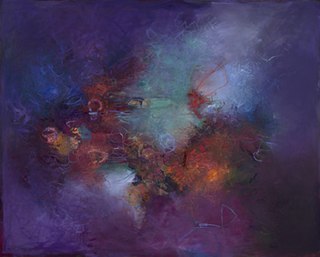
Sigrid Burton is an American visual artist, known for semi-abstract paintings that combine atmospheric color fields and allusions to nature and culture. Her work bears a wide range of influences, including Buddhist cave and Indian miniature paintings, Jain cosmological diagrams, and artists from the Renaissance to modernists such as Kandinsky, Klee and the Color field painters to the California Light and Space movement. Critics have noted the predominance of color over form in her work, sometimes describing her approach as "chromatic expressionism."
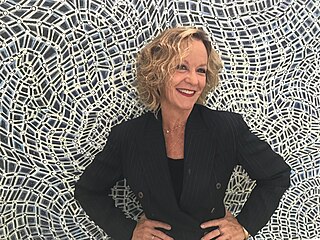
Susan Sensemann is an American artist, educator and arts administrator, best known for her detailed, largely abstract patterned paintings and photomontages reflecting gothic, baroque, spiritual and feminist sensibilities. She has exhibited her work at venues including the Art Institute of Chicago, A.I.R., The Living Art Museum (Reykjavík), Indianapolis Art Center, Chicago Cultural Center, and Art Institute of Boston, on four continents. Her work has been widely reviewed and resides in numerous private, university and corporate collections. Sensemann is known as a versatile and prolific creator, whose ideas have led her to explore diverse painting materials, media, subject matter, and styles from abstraction to realism. Critics note her work's densely packed compositions, shallow fields of oscillating space, complex tactile surfaces, and sensuous color and linearity. James Yood wrote that Sensemann's abstract paintings were "fraught with meaning, charged with value, and seething with import" in their spiritual seeking. Art historian Leisa Rundquist described her photomontage self-portraits as "strangely sensual, yet disturbing" images drawn from "the depths of the unconscious."

Helen O'Toole is an Irish-born painter based in the United States, who is known for abstract paintings suggestive of landscape. She has exhibited throughout Ireland and the United States, in Singapore, and at venues including the San Francisco Museum of Modern Art, Portland Art Museum, Chicago Cultural Center, Tacoma Art Museum, and Institute of Contemporary Arts Singapore. Her work has been featured in the journals Artforum, Arts Magazine, New Art Examiner, and Zyzzyva, as well as the Chicago Tribune,The Irish Times, Seattle Post-Intelligencer, and National Public Radio. Art writers frequently discuss the interplay in her work between abstraction, the evocation of otherworldly light, land and space, and a commitment to investigating meaning through a painting process akin to the processes of cultivation and excavation. Artforum critic James Yood wrote, "echoing the often inchoate quality of nature, her paint surges toward mystery and hints at a kind of chiaroscuro of the spirit"; curator Bonnie Laing-Malcomson suggests her "richly colored monumental paintings evoke the moody landscape of her rural Irish homeland, summoning the force of J. M. W. Turner and Mark Rothko." She has been recognized with a Guggenheim Fellowship in Fine Arts, a Contemporary Northwest Art Award, and a Pollock-Krasner Foundation Award (2013), among other awards. O'Toole lives in Seattle, Washington and is Professor of Art and Chair of the Painting and Drawing Program at the University of Washington.

Judith Simonian is an American artist known for her montage-like paintings and early urban public art. She began her career as a significant participant in an emergent 1980s downtown Los Angeles art scene that spawned street art and performances, galleries and institutions such as Los Angeles Contemporary Exhibitions (LACE) and Los Angeles Institute of Contemporary Art (LAICA), before moving to New York City in 1985.
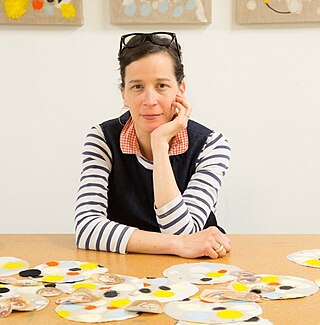
Diana Guerrero-Maciá is an American studio-based artist who has produced paintings, works on paper, prints and sculpture. She is known for her hybrid or "unpainted paintings"—works constructed with fabric cutwork, collage, stitching and dye that collapse boundaries between the fields of painting, fiber and design and challenge distinctions between "high" art and craft. Her largely abstract work samples and revises multiple materials, symbols and typography, and graphic elements such as grids, stripes and archetypal shapes to engage with color, iconography and diverse cultural movements and conventions.
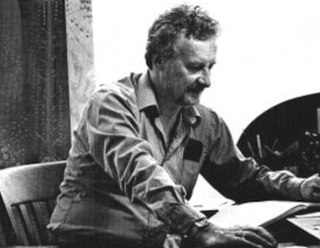
Richard Loving (1924–2021) was an American artist and educator, primarily based in Chicago, Illinois. He gained recognition in the 1980s as a member of the "Allusive Abstractionists," an informal group of Chicago painters, whose individual forms of organic abstraction embraced evocative imagery and metaphor, counter to the dominant minimalist mode. He is most known for paintings that critics describe as metaphysical and visionary, which move fluidly between abstraction and representation, personalized symbolism taking organic and geometric forms, and chaos and order. They are often characterized by bright patterns of dotted lines and dashes, enigmatic spatial fields, and an illuminated quality. In 2010, critic James Yood wrote that Loving's work "mull[ed] over the possibilities of pattern and representation, of narrative and allegory" to attain a kind of wisdom, transcendence and acknowledgement of universals, "seeking understanding of self within the poetics of the physical world."

Judith Raphael is an American figurative painter and educator based in Chicago. She is known for provocative depictions of childhood, particularly contemporary girlhood and its passage toward adulthood. This work emerged in the wake of feminism, and in style and content, was influenced by figurative painters such as Paula Rego, Balthus and Lucian Freud. Her paintings often recast heroic art-historical portrayals of men with contemporary girls in order to redress the paucity of strong female icons in Western art. Writer Carol Becker said of Raphael's later portraits, "[her] girls are different races and sizes, and each one’s face and posture is unique, but they share attitude. Although they are hip, they seem not yet secure in who they are or what they are about; they appear to be trying to construct their identities."


















